Most vegetables from grocery stores travel over 1,500 miles before reaching your plate, losing nutrients and flavor along the way. You’ll discover that growing edible plants at home isn’t just about saving money; it’s about accessing the freshest, most vibrant ingredients steps from your kitchen. From aromatic herbs that transform ordinary dishes into culinary masterpieces to leafy greens packed with vitamins, your home garden can become a sustainable source of nourishment that’ll change how you cook and eat.
Contents
- 1 1. Basil for Homemade Pesto
- 2 2. Rosemary for Roasted Vegetables
- 3 3. Mint for Refreshing Tea
- 4 4. Thyme for Chicken Dishes
- 5 5. Oregano for Pizza Toppings
- 6 6. Parsley for Garnishing Dishes
- 7 7. Sage for Butternut Squash
- 8 8. Cilantro for Fresh Salsa
- 9 9. Chives for Baked Potatoes
- 10 10. Dill for Seafood Dishes
- 11 11. Tarragon for Creamy Sauces
- 12 12. Lavender for Honey Infusion
- 13 13. Lemongrass for Asian Curries
- 14 14. Bay Leaves for Soups
- 15 15. Marjoram for Pasta Dishes
1. Basil for Homemade Pesto
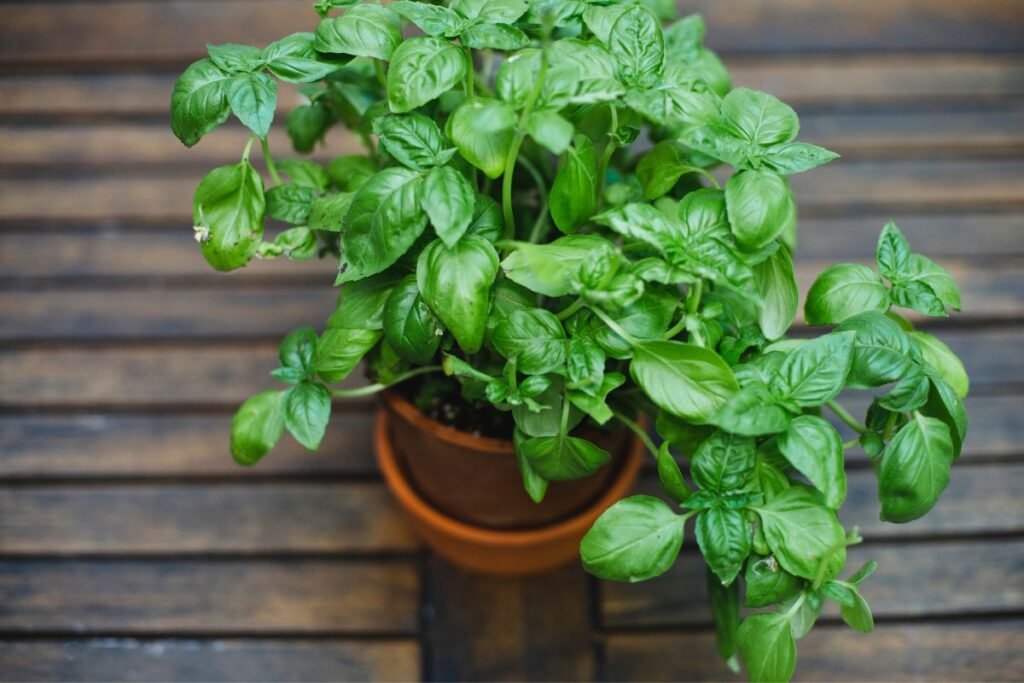
Growing basil for homemade pesto is a rewarding endeavor that provides fresh, aromatic leaves perfect for creating this classic Italian sauce. This popular herb grows quickly and produces abundantly when properly maintained, with just a few plants yielding enough leaves for multiple batches of pesto throughout the growing season. Fresh basil leaves offer a more vibrant flavor than their dried counterparts, making home-grown basil essential for authentic pesto preparation.
- Light: Full sun, minimum 6 hours daily; can tolerate partial shade
- Water: Consistent moisture but not waterlogged; water when top inch of soil feels dry
- Soil: Well-draining, fertile soil with pH 6.0-7.0
- Temperature: Warm conditions, 70-80°F (21-27°C)
- Spacing: 12-18 inches between plants
- Container size: Minimum 2-gallon pot with drainage holes
- Fertilizer: Light feeding with balanced fertilizer every 4-6 weeks
- Harvesting: Regular pruning of leaves promotes bushier growth
- Indoor growing: Possible with adequate light and good air circulation
- Companion planting: Benefits from growing near tomatoes or peppers
2. Rosemary for Roasted Vegetables
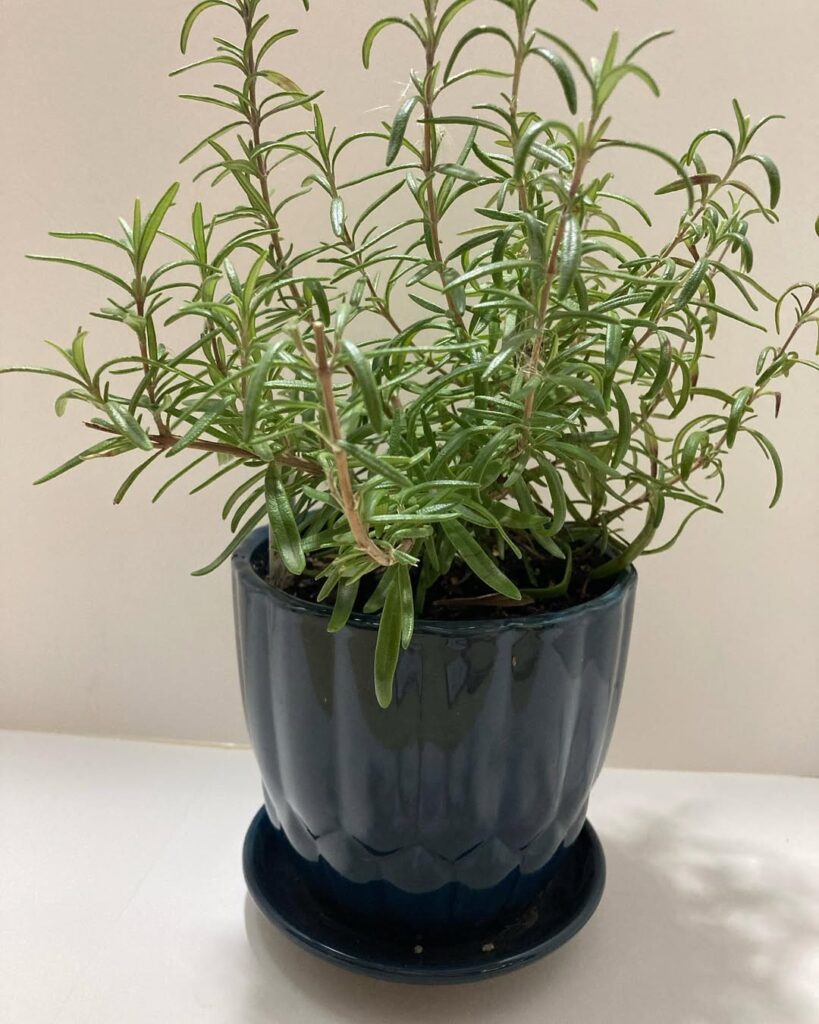
Rosemary is a versatile Mediterranean herb that pairs exceptionally well with roasted vegetables, adding a robust, pine-like flavor that enhances dishes like potatoes, carrots, and squash. When roasting vegetables, simply strip fresh rosemary needles from their woody stems and sprinkle them over the vegetables before cooking, or lay whole sprigs among the vegetables to infuse them with flavor during the roasting process.
- Light: Full sun, minimum 6-8 hours daily
- Soil: Well-draining, slightly alkaline soil with pH 6.0-7.0
- Water: Allow soil to dry between waterings; drought-tolerant once established
- Temperature: Thrives in 65-70°F (18-21°C)
- Spacing: 2-3 feet between plants
- Container Size: Minimum 12-inch deep pot with drainage holes
- Humidity: Tolerates low humidity; good air circulation needed
- Fertilizer: Light feeding in spring; too much nitrogen reduces flavor
3. Mint for Refreshing Tea
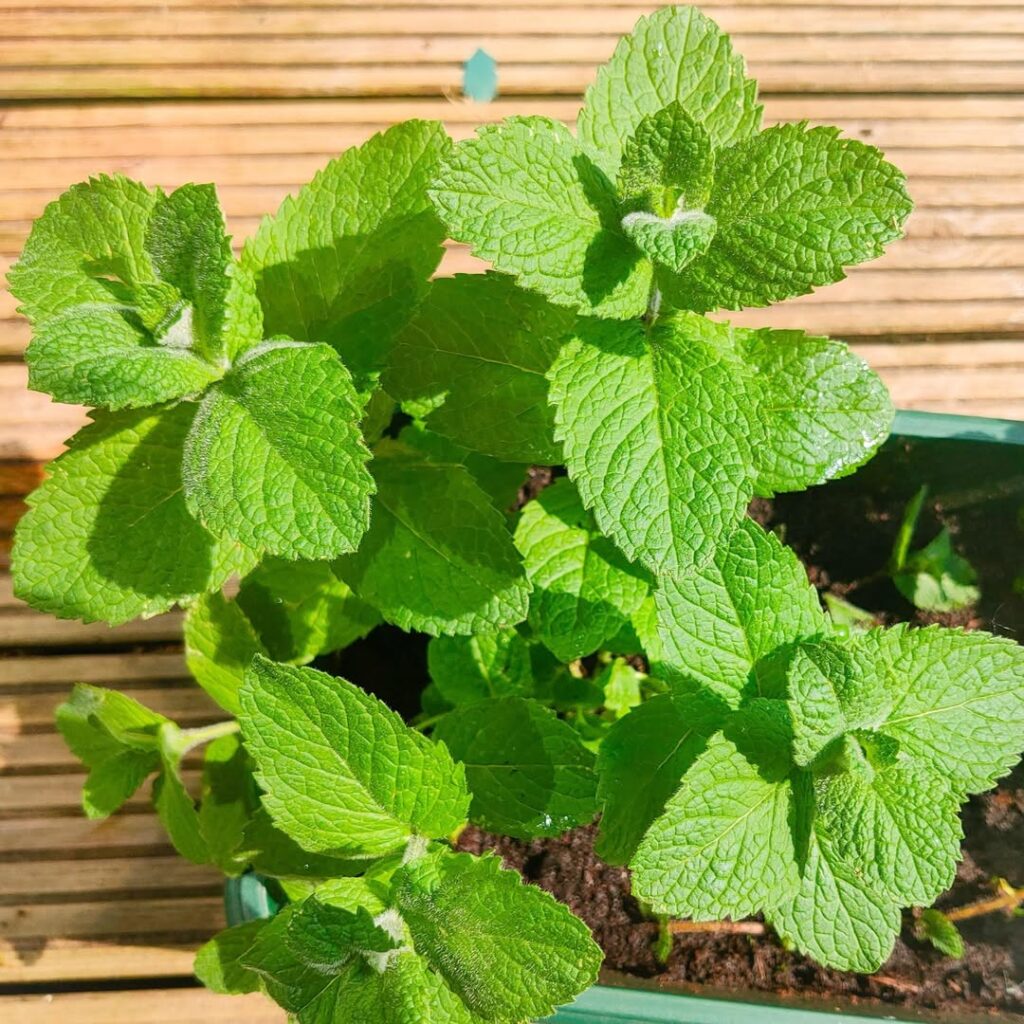
Mint is a vigorous perennial herb perfect for making invigorating homemade teas, whether served hot or cold. The plant’s aromatic leaves can be harvested throughout the growing season, and a few sprigs are all you need to create a flavorful beverage. Fresh mint tea offers a naturally caffeine-free alternative to traditional teas, and the plant’s natural oils provide a cooling sensation that makes it especially enjoyable during warm weather.
- Light: Partial to full sun; tolerates some shade
- Water: Keep soil consistently moist but not waterlogged; water when top inch of soil feels dry
- Soil: Well-draining, rich organic soil with pH between 6.0-7.0
- Temperature: Thrives in temperatures between 55-70°F
- Container: Plant in containers or barriers to control spreading
- Spacing: 18-24 inches between plants
- Depth: Plant at same depth as nursery container
- Fertilizer: Light feeder; minimal fertilization needed
- Companion plants: Keep separate from other herbs as mint spreads aggressively
4. Thyme for Chicken Dishes
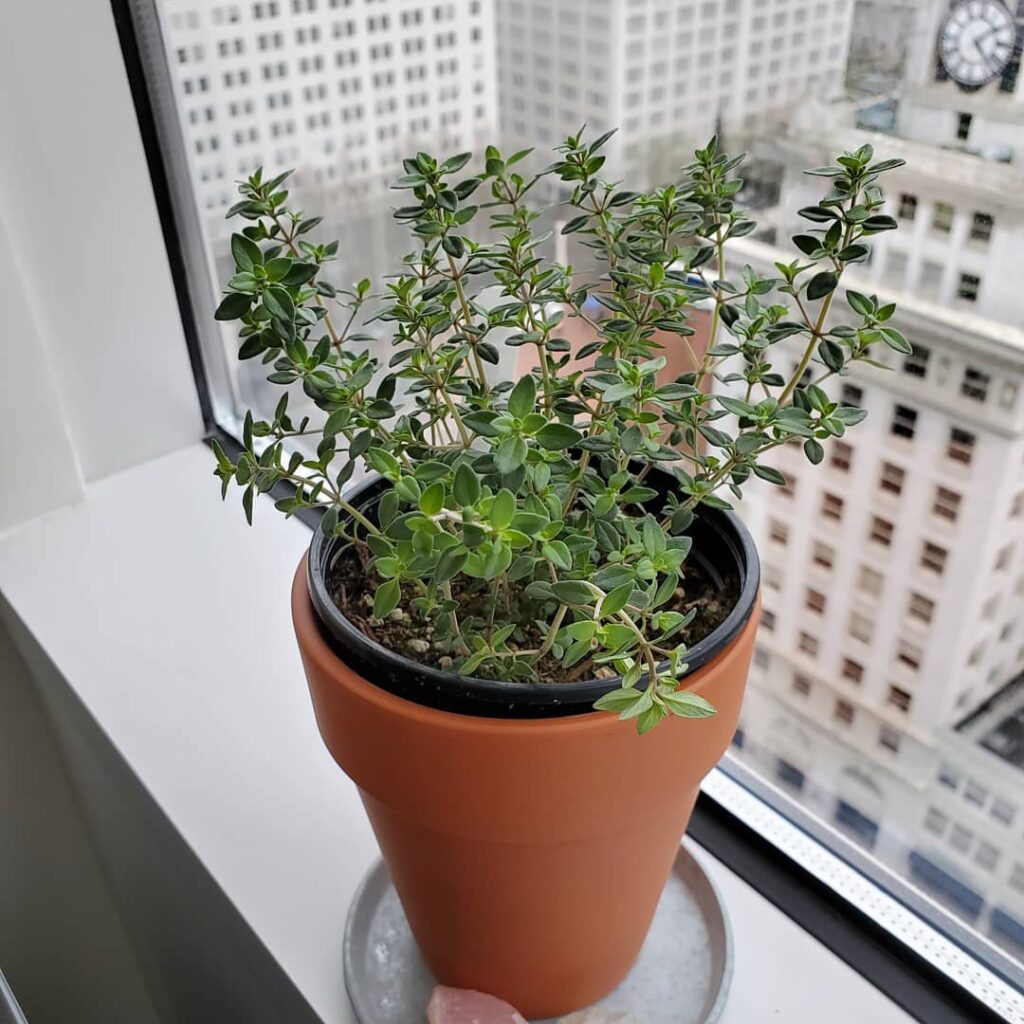
Thyme is a fragrant herb that pairs exceptionally well with chicken dishes, adding an earthy, minty, and slightly lemony flavor to poultry preparations. This low-growing perennial herb is particularly valued in Mediterranean cuisine and can be used fresh or dried, infusing dishes with its distinct aroma and taste. When cooking chicken, thyme’s woody stems can be added whole during roasting or its small leaves can be stripped and sprinkled directly onto the meat before, during, or after cooking.
- Light: Full sun, minimum 6 hours daily
- Water: Moderate watering, allowing soil to dry between waterings; drought-tolerant once established
- Soil: Well-draining, slightly alkaline soil with pH 6.0-8.0
- Temperature: Hardy in zones 5-9; prefers 60-70°F
- Spacing: 12-18 inches between plants
- Container requirements: 6-inch deep pots with drainage holes
- Fertilizer: Light feeder; minimal fertilization needed
- Harvesting: Clip stems as needed, avoiding cutting woody portions
5. Oregano for Pizza Toppings
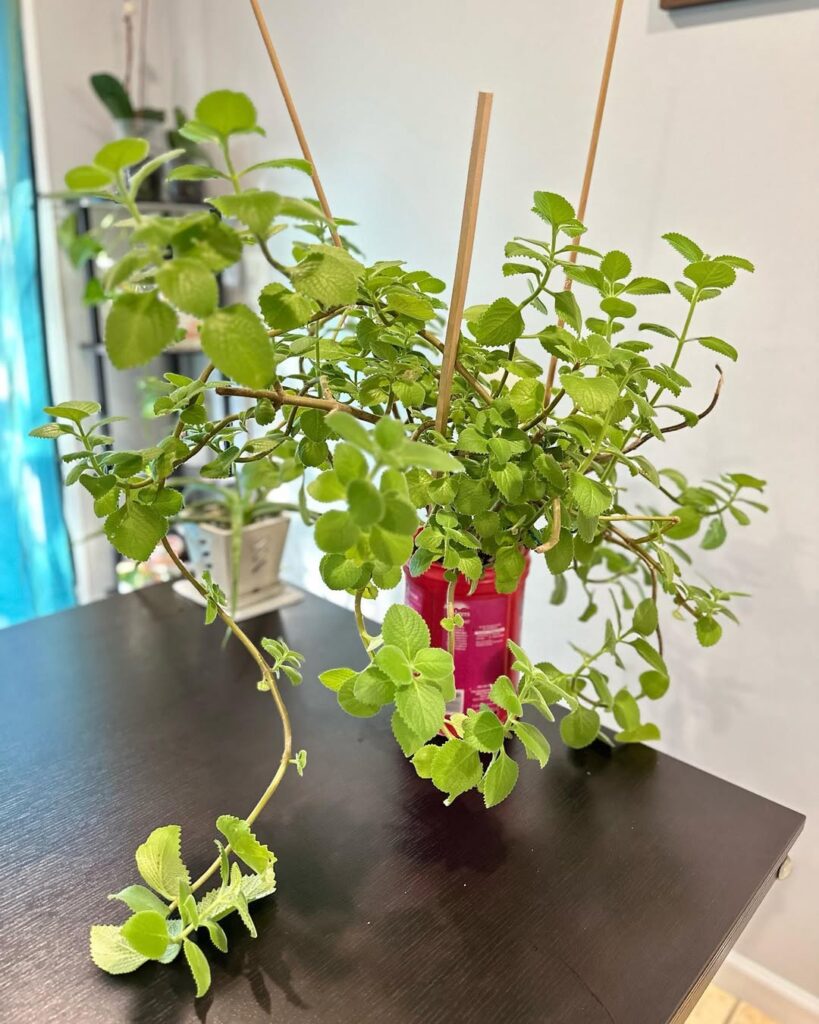
Growing oregano at home provides a fresh, aromatic herb perfect for homemade pizzas, with a more intense flavor than store-bought varieties. This Mediterranean herb develops small leaves packed with essential oils that create the characteristic pizza-seasoning taste, and harvesting fresh leaves directly before use guarantees maximum flavor impact on your homemade pies.
- Light: Full sun (6-8 hours daily); can tolerate partial shade but produces best flavor in full sun
- Water: Drought-tolerant; water when top inch of soil is dry
- Soil: Well-draining, sandy or rocky soil with pH 6.0-7.0
- Temperature: Thrives in 60-80°F (15-27°C)
- Space: 12-18 inches between plants
- Container: Minimum 12-inch pot with drainage holes
- Fertilizer: Light feeder; minimal fertilization needed
- Harvest: Begin when plant reaches 6 inches tall
- Companion Plants: Tomatoes, peppers, basil
6. Parsley for Garnishing Dishes
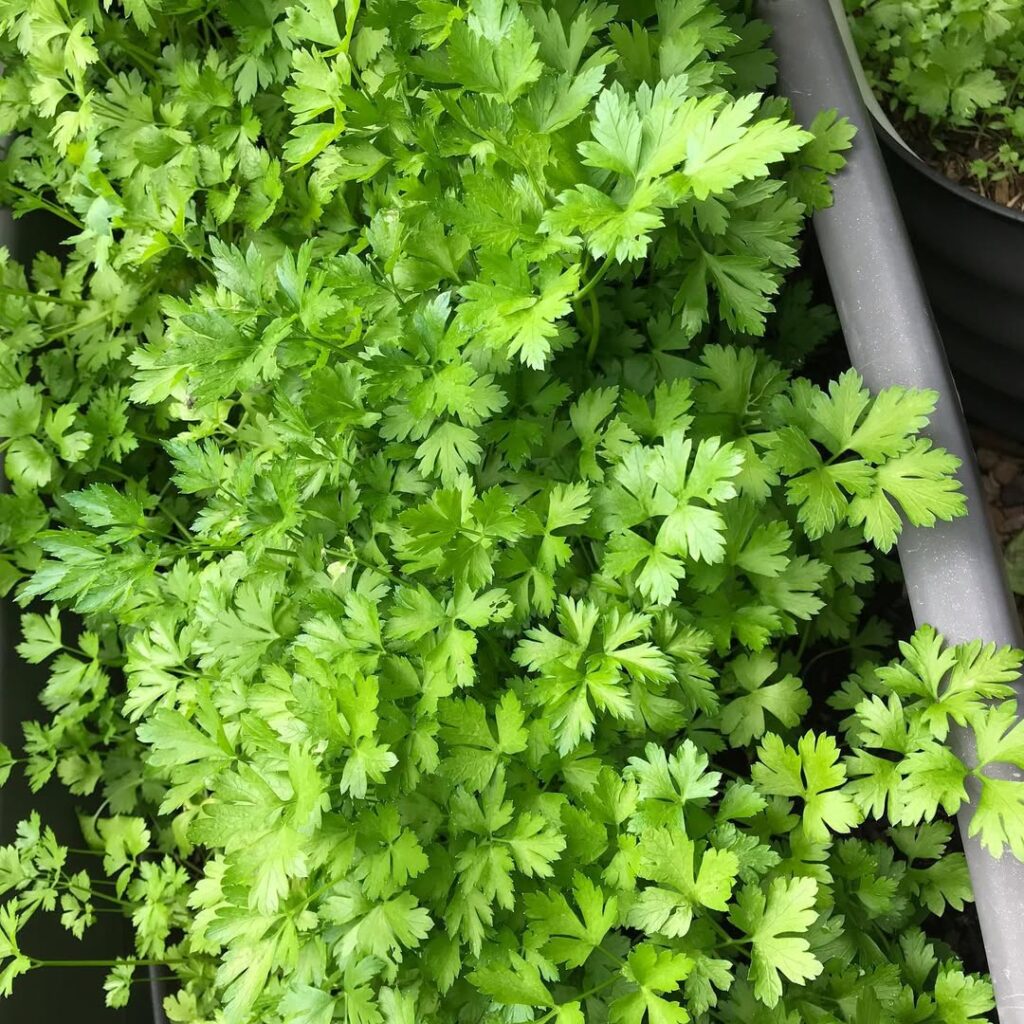
Parsley is a versatile herb that adds a fresh, decorative touch to countless dishes while also providing nutritional benefits like vitamins A, C, and K. This biennial plant produces bright green, ruffled leaves that can be used as a garnish both fresh and dried, bringing visual appeal and a mild, crisp flavor to soups, salads, and main courses. Its ability to cleanse the palate makes it particularly valuable in restaurant settings and home cooking alike.
- Light: Prefers full sun but tolerates partial shade; minimum 6 hours of sunlight daily
- Water: Keep soil consistently moist but not waterlogged; water when top inch of soil feels dry
- Soil: Well-draining, rich organic soil with pH between 6.0 and 7.0
- Temperature: Ideal growing temperature 60-70°F (15-21°C)
- Spacing: Plant seeds 6-8 inches apart
- Container depth: Minimum 8 inches deep for proper root development
- Fertilizer: Light feeder; apply balanced liquid fertilizer monthly during growing season
7. Sage for Butternut Squash
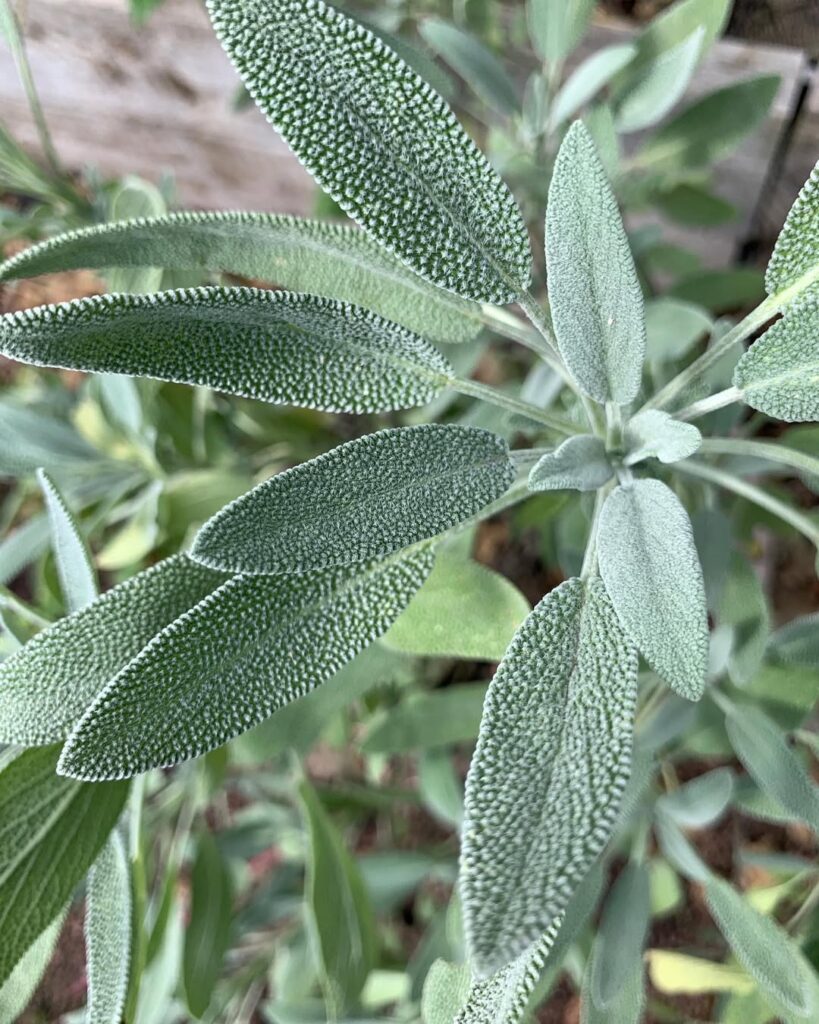
Sage and butternut squash form a classic culinary pairing, with the earthy, peppery notes of sage perfectly complementing the sweet, nutty flavor of the winter squash. Fresh sage leaves can be fried crispy and crumbled over roasted butternut squash, or chopped and incorporated into squash soups, risottos, and pasta dishes. This Mediterranean herb is particularly well-suited for growing alongside squash plants, as both crops thrive in similar conditions during the warm growing season.
- Light: Full sun, at least 6-8 hours daily
- Water: Moderate watering, allowing soil to dry between waterings; drought-tolerant once established
- Soil: Well-draining, slightly acidic to neutral pH (6.0-7.0)
- Temperature: 60-70°F (15-21°C)
- Spacing: 18-24 inches between plants
- Companions: Compatible with butternut squash and other cucurbits
- Container size: Minimum 12-inch deep pot
- Fertilizer: Light feeder; minimal fertilization needed
- Drainage: Excellent drainage required; cannot tolerate wet feet
- Growing season: Spring through fall, perennial in zones 5-9
8. Cilantro for Fresh Salsa

Cilantro, also known as coriander, is a versatile herb essential for making fresh salsa and other Mexican and Asian dishes. This fast-growing annual herb produces delicate, lacy leaves that are harvested young for the best flavor, as older leaves can become bitter. The plant typically reaches 1-2 feet tall and will eventually produce small white flowers that develop into coriander seeds if allowed to mature.
- Light: Partial shade to full sun; protect from intense afternoon sun in hot climates
- Water: Keep soil consistently moist but not waterlogged; water when top inch of soil feels dry
- Soil: Well-draining, fertile soil with pH between 6.2 and 6.8
- Temperature: Cool weather crop, grows best at 60-70°F
- Spacing: Plant seeds 6-8 inches apart
- Time to Harvest: 3-4 weeks for leaves
- Special Notes: Succession plant every 2-3 weeks for continuous harvest; bolts quickly in hot weather
9. Chives for Baked Potatoes
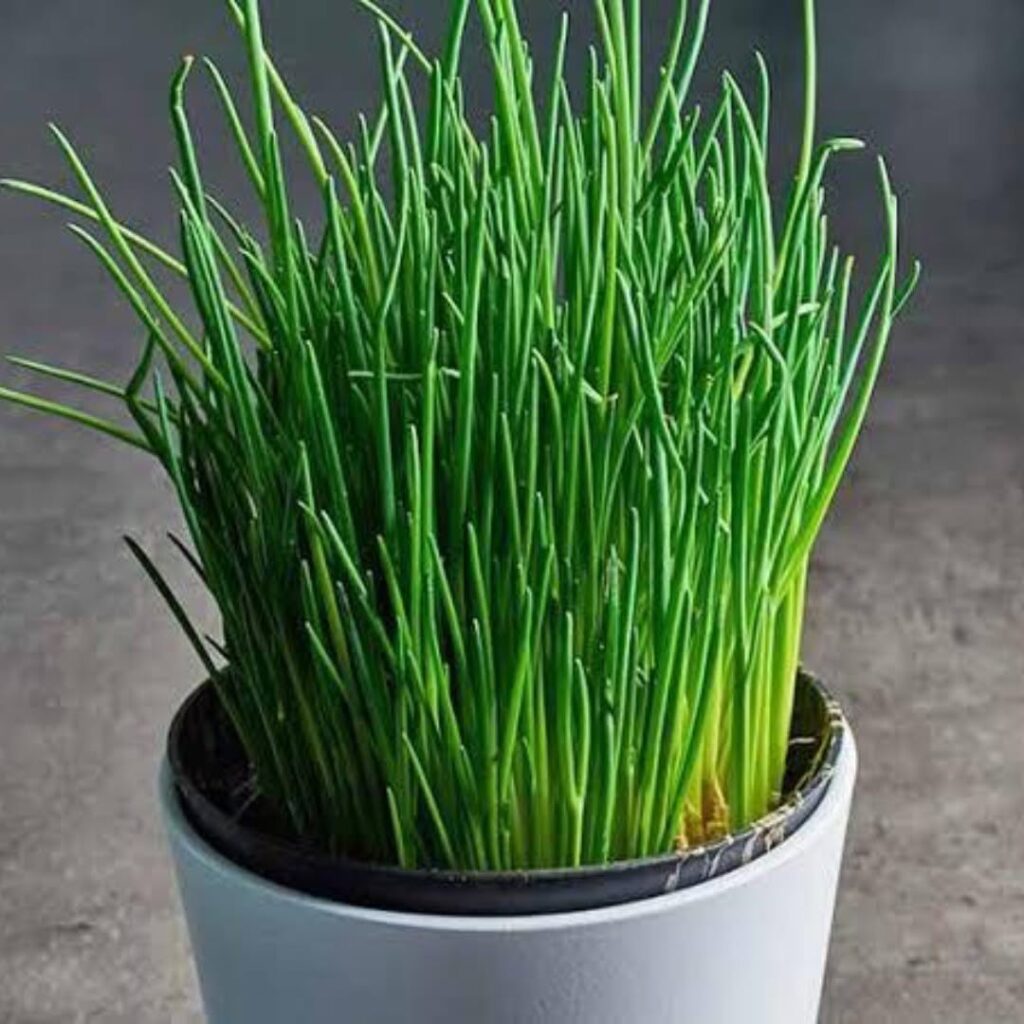
Chives are one of the easiest herbs to grow and add a mild onion flavor perfect for topping baked potatoes. These perennial plants produce slender, hollow green stems that can be snipped as needed, and they regrow quickly after harvesting. The attractive purple flowers that appear in spring are also edible and make a beautiful garnish, while the entire plant continues producing fresh stems throughout the growing season.
- Light: Full sun to partial shade; at least 6 hours of direct sunlight daily
- Water: Keep soil consistently moist but not waterlogged; water when top inch of soil feels dry
- Soil: Well-draining, rich organic soil with pH between 6.0-7.0
- Temperature: Tolerates cold well; grows best in 60-70°F range
- Container: Can grow in pots at least 6 inches deep
- Spacing: Plant 4-6 inches apart
- Fertilizer: Light feeder; apply balanced fertilizer monthly during growing season
10. Dill for Seafood Dishes

Dill is a versatile herb particularly prized for its delicate, feathery leaves and distinctive flavor that pairs perfectly with seafood dishes. Its fresh, grassy-citrus taste enhances salmon, shrimp, and other fish preparations, while also working well in pickles and dips. The plant grows quickly, reaching heights of 2-4 feet, and both its leaves and seeds can be harvested for culinary use, making it an excellent addition to any home herb garden focused on seafood preparation.
- Light: Full sun, minimum 6-8 hours daily
- Water: Consistent moisture but not waterlogged; water when top inch of soil feels dry
- Soil: Well-draining, fertile soil with pH between 5.5-6.5
- Temperature: Ideal growth between 60-75°F
- Spacing: Plant seeds 12-18 inches apart
- Container depth: Minimum 12 inches deep for proper root development
- Fertilizer: Light feeding with balanced organic fertilizer during growing season
- Companions: Grows well with cucumbers, lettuce, and onions
11. Tarragon for Creamy Sauces
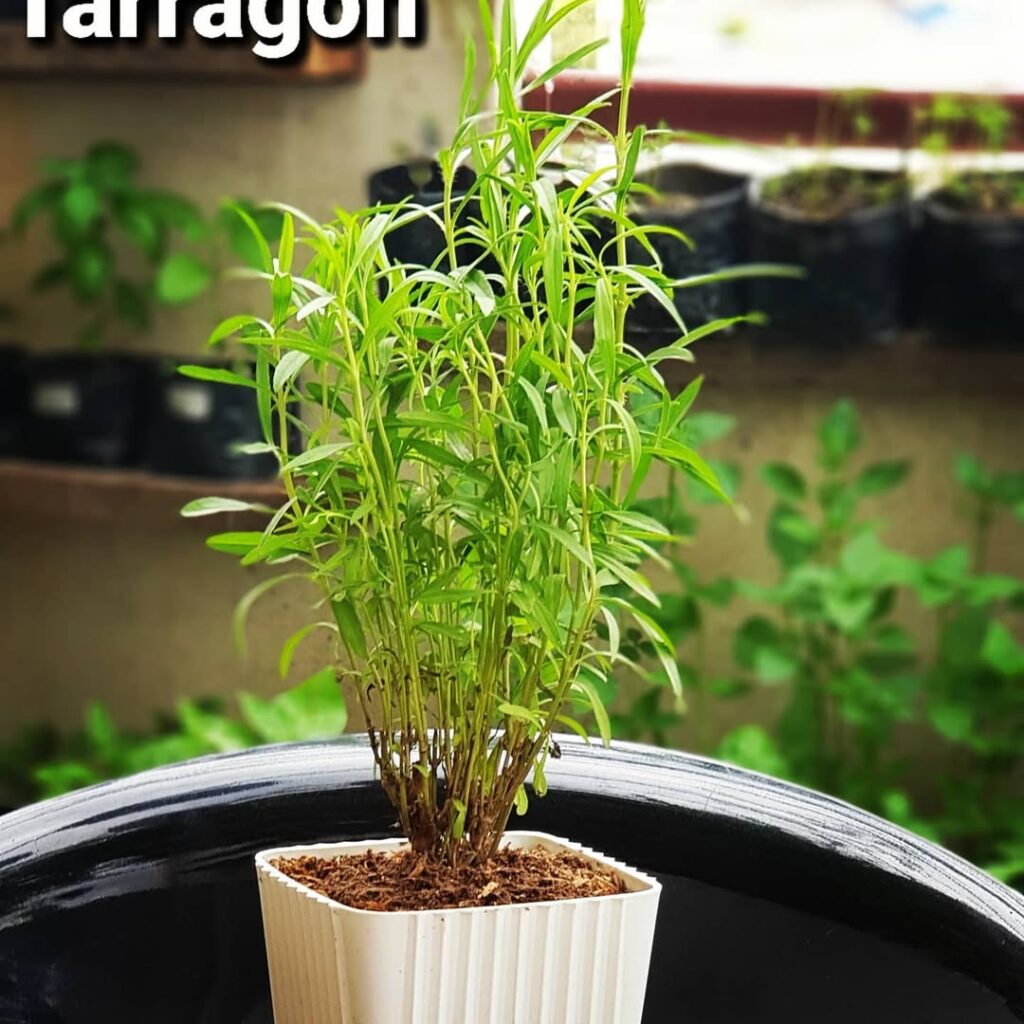
French tarragon is a perennial herb prized for its delicate anise-like flavor that pairs exceptionally well with creamy sauces, chicken dishes, and vinaigrettes. Its slender green leaves contain essential oils that give it a distinctive taste perfect for classic béarnaise sauce and other rich, creamy preparations. When growing tarragon specifically for sauce-making, harvest the young, tender leaves regularly to encourage bushier growth and maintain the best flavor profile.
- Light: Partial sun to full sun; morning sun with afternoon shade in hot climates
- Water: Moderate watering; soil should be kept moist but not waterlogged
- Soil: Well-draining, sandy or loamy soil with pH 6.5-7.5
- Temperature: Thrives in zones 4-8; prefers cool weather
- Spacing: 18-24 inches between plants
- Container size: Minimum 12-inch deep pot
- Fertilizer: Light feeding with balanced fertilizer in spring
- Pruning: Cut back to 4-6 inches in late fall
- Companion planting: Works well with other Mediterranean herbs
- Winter care: Mulch in cold regions; can be brought indoors in containers
12. Lavender for Honey Infusion
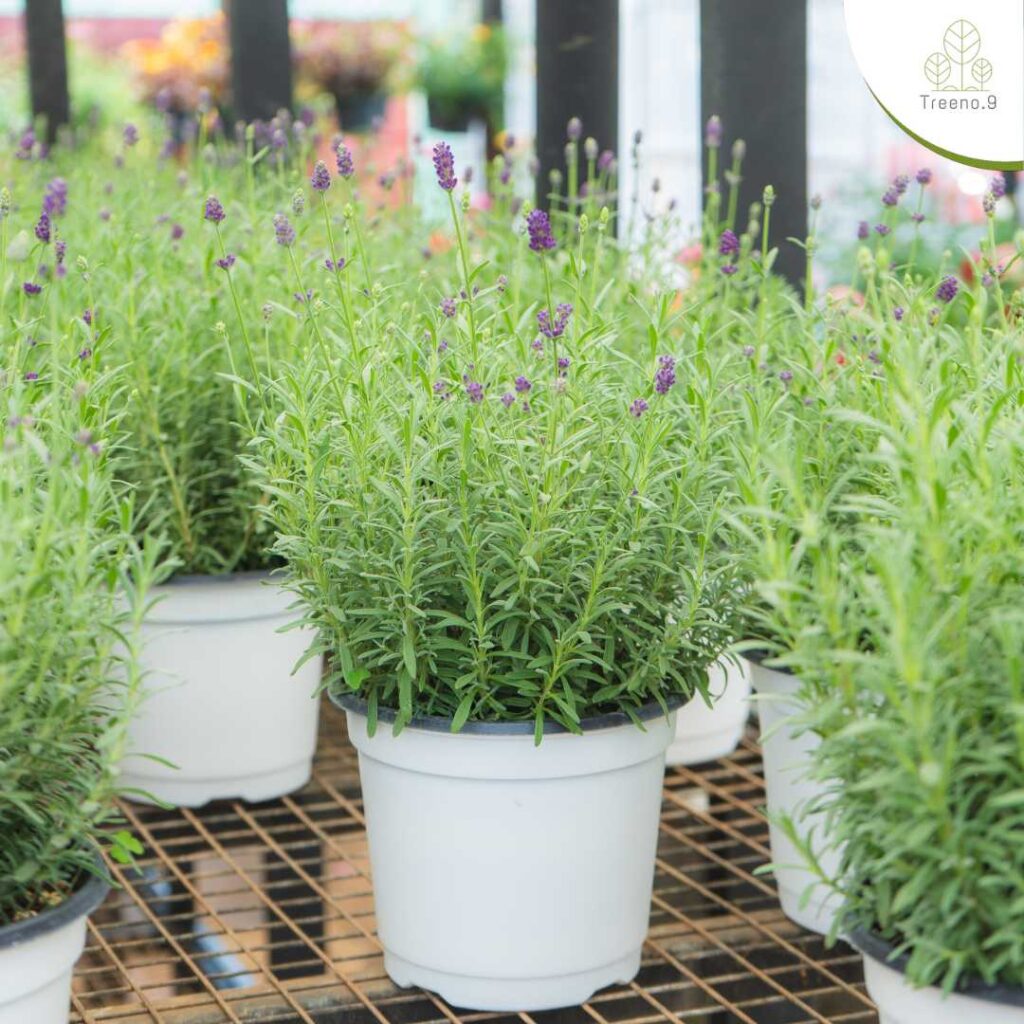
Lavender is an excellent herb for creating delicately flavored honey infusions, offering a sweet, floral taste that enhances both culinary creations and beverages. When growing lavender specifically for honey infusion, English lavender (Lavandula angustifolia) varieties provide the best flavor profile, producing aromatic flowers that can be dried and steeped in raw honey to create a fragrant, versatile condiment that pairs beautifully with teas, desserts, and cheese platters.
- Light: Full sun exposure (6-8 hours daily)
- Soil: Well-draining, alkaline soil with pH 6.7-7.3
- Water: Drought-tolerant; water deeply but infrequently
- Spacing: 18-24 inches between plants
- Temperature: Hardy in zones 5-9
- Humidity: Prefers low humidity
- Fertilizer: Minimal; too much nitrogen reduces flower production
- Drainage: Excellent drainage required; raised beds or slopes ideal
- Pruning: Cut back by one-third in early spring
- Air circulation: Good airflow between plants needed to prevent fungal issues
13. Lemongrass for Asian Curries
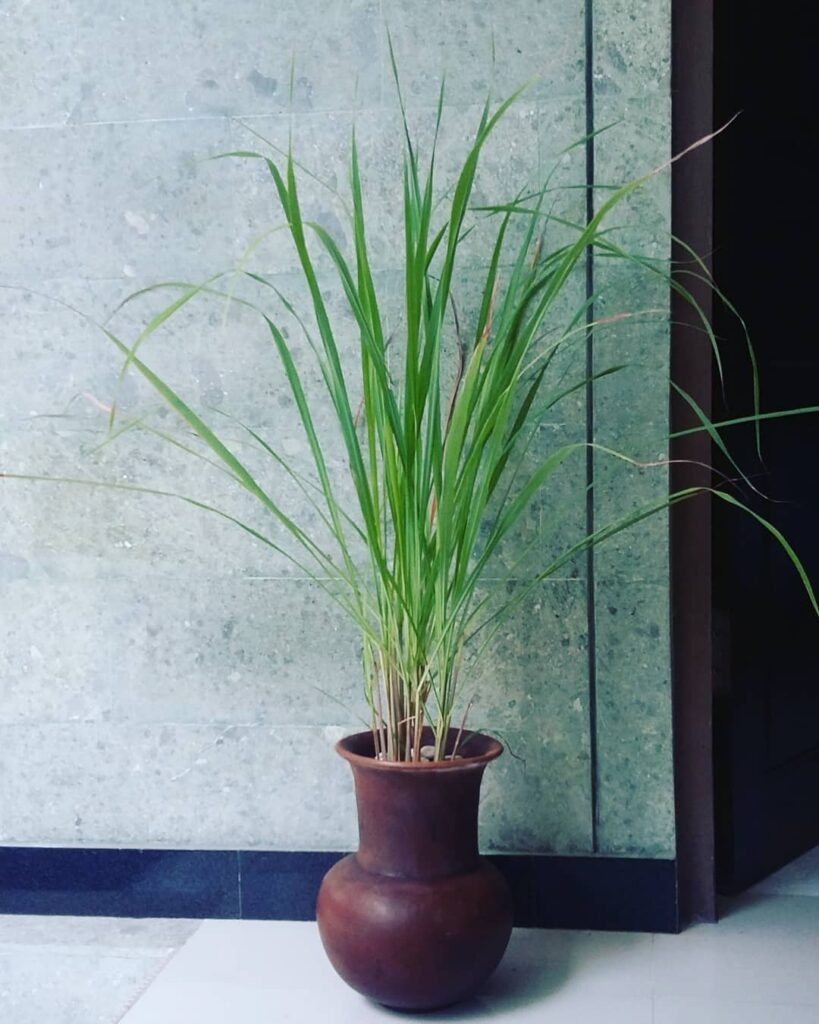
Lemongrass is a fragrant, citrus-flavored herb widely used in Southeast Asian cuisine, particularly in Thai and Vietnamese dishes. This tall, grass-like plant produces stalks that can be harvested, chopped, and added to curries, soups, and stir-fries, imparting a distinctive lemony flavor and aroma. The stalks can also be steeped to make a soothing tea, while the leaves are often used to flavor broths and marinades.
- Light: Full sun, minimum 6 hours daily
- Temperature: 40-90°F (4-32°C), not frost tolerant
- Soil: Well-draining, rich in organic matter, pH 6.0-7.8
- Water: Keep soil consistently moist but not waterlogged
- Spacing: 24 inches between plants
- Container size: Minimum 5 gallons
- Humidity: Prefers high humidity
- Fertilizer: Monthly feeding with balanced fertilizer during growing season
- Growing zone: USDA zones 8-11, or indoors in colder climates
14. Bay Leaves for Soups
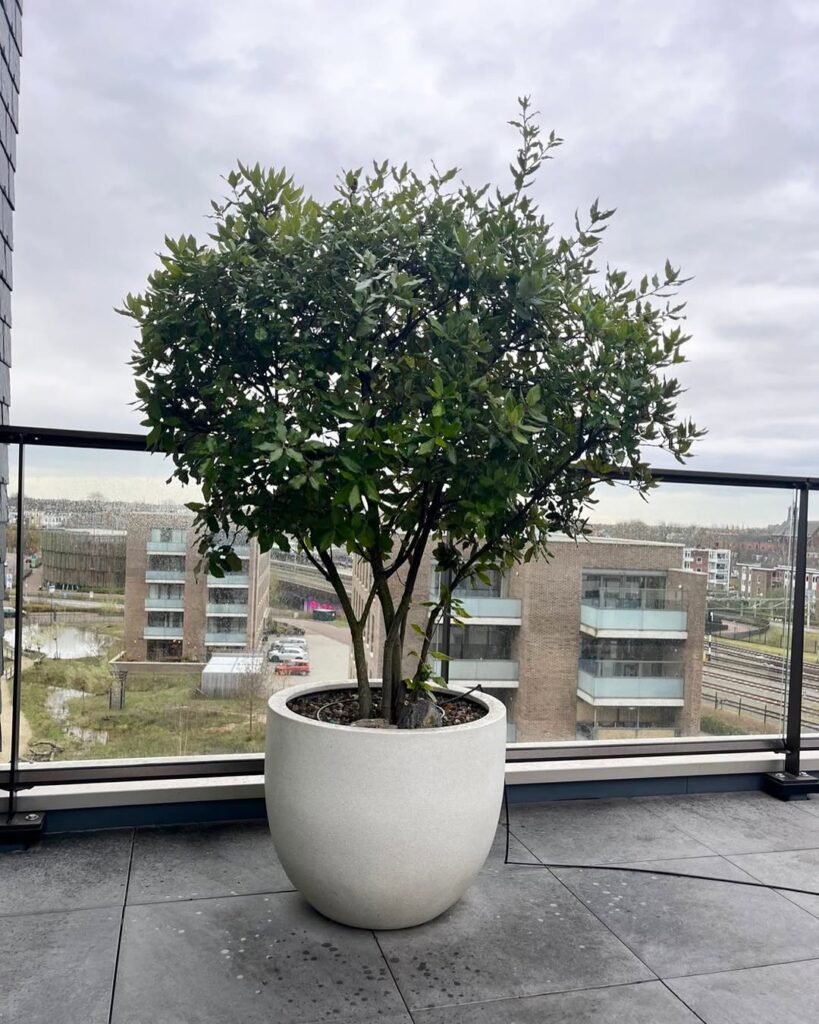
Bay leaves come from the bay laurel tree (Laurus nobilis), a versatile herb that adds deep, aromatic flavor to soups, stews, and sauces. While the tree can grow quite tall in nature, it adapts well to container growing and can be maintained as a compact houseplant or small outdoor shrub. Fresh bay leaves have a more subtle flavor than dried ones, and having your own plant guarantees a steady supply of this essential culinary herb.
- Light: Bright indirect sunlight; can tolerate partial shade
- Water: Regular watering with soil allowed to dry slightly between waterings; avoid waterlogging
- Soil: Well-draining, slightly acidic potting mix
- Temperature: 65-75°F (18-24°C); protect from frost
- Humidity: Moderate; tolerates average household humidity
- Container: Deep pot with drainage holes
- Fertilizer: Light feeding with balanced fertilizer during growing season
- Space: Can be pruned to maintain desired size, but needs room for root growth
15. Marjoram for Pasta Dishes
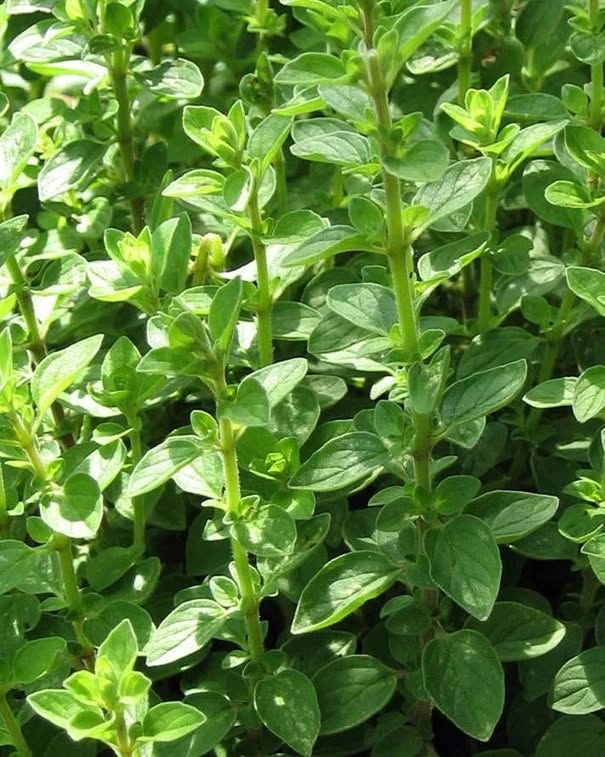
Marjoram is a fragrant Mediterranean herb that adds a delicate, sweet-pine flavor to pasta dishes. Its tender leaves can be used fresh or dried, enhancing pasta sauces, pestos, and garnishes with their mild oregano-like taste. When added to pasta dishes, marjoram’s subtle warmth complements tomato-based sauces particularly well and works beautifully with other Mediterranean ingredients like olive oil, garlic, and fresh vegetables.
- Light: Full sun to partial shade; minimum 6 hours of direct sunlight daily
- Water: Moderate watering; soil should be kept evenly moist but not waterlogged
- Soil: Well-draining, sandy loam with pH 6.0-7.0
- Temperature: 65-70°F (18-21°C)
- Spacing: 12 inches between plants
- Container size: Minimum 6 inches deep
- Fertilizer: Light feeding with balanced organic fertilizer in spring
- Humidity: Moderate; tolerates dry conditions
- Harvest: Begin when plant reaches 6 inches in height
